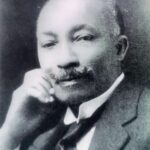JANSSENS, JAN WILLEM
- 4 Min Read
Jan Willem Janssens (October 12, 1762-May 23, 1838) was governor and military commander of the Cape from 1802 to 1806, during the era in which the Netherlands and its possessions were ruled by the Batavian Republic, a satellite regime of revolutionary France.

PHOTO CAPTION: Jan Willem Janssens SOURCE: EA Library
Janssens was born in The Hague, in the Netherlands, the son of a military officer. He entered the military and fought against the French from 1793-94. Injured in battle, he became an administrator, serving as secretary of the ministry of war from 1800-1802. Following the Peace of Amiens in 1802, which restored the Cape to the Batavian Republic, Janssens was appointed governor of the Cape, and arrived there in February 1803.
He travelled to the Cape together with the Dutch commissioner-general, J.A.U. de Mist, with whom he cooperated closely, and whose programme of reform he was to continue after de Mist’s departure in 1805. Shortly after his arrival, Janssers went into the interior of the Eastern Cape, where a frontier war between the Xhosa and the Boer settlers was still in progress. The task of restoring peace in the region was, however, beset by many complexities. For one thing, Boer farmers in the regions of Swellendam and Graaff-Reinet were challenging the authority of the Dutch administration at the Cape.
In addition, there was tension between the Boers and the Khoi Khoi (Hottentots), who felt ill-treated by the Boers. Moreover, the Xhosa were themselves split by the conflict which had developed between the Xhosa leader Ndlambe and his nephew Nggika. The whole situation had led to chaotic conditions, and to the general collapse of law and order. Bands of Khoi Khoi or Xhosa engaged in plundering expeditions, and many farms had been abandoned or destroyed.
In the face of all this, the Dutch administration at the Cape sought, among other goals, to help restore peace by confirming the Fish River as the boundary between the Xhosa and the Boer settlers. Janssens travelled past Algoa Bay to the Kat River, where he met Ndlambe, whom he tried without success to persuade to return eastwards across the Fish River to his own territory.
Talks between Janssens and Ngqika also failed, although Ngqika was prepared to recognise the Fish River as a boundary. Janssens and his party then journeyed to Graaff-Reinet and the Orange River. Janssens was able to end the frontier hostilities, however, by granting the Khoi Khoi leaders their own lands. But, as war had once again broken out between Britain and France, he then found himself obliged to return to Cape Town to prepare for a possible British attack.
Back in Cape Town, he devoted his time to improving the colony’s defenses, especially at Saldanha Bay and Swellendam. His position was weakened, however, when some Dutch troops had to be sent from the Cape to Batavia in the East Indies, and Dutch reinforcements being sent to the Cape were lost at sea. Finally, early in January 1806. British landings took place. On January 8 the British forces numbering some 4,000 defeated Janssens’ troops, only about 2,000 strong, at Blouberg, and later he surrendered at present-day Somerset West. When Britain reclaimed the colony, Janssens and his men were repatriated to the Netherlands.
When he returned there, he found that the Netherlands had become a kingdom under French control and had been incorporated into the French empire. In 1811 he was appointed governor-general of the Netherlands East Indies (Java) but a few months later was subjected to the humiliation of surrendering to the British a second time. He was sent to England as a prisoner but was allowed to return to the Netherlands on parole in 1812. He served in the French and Dutch armies until he retired in 1815. He was elevated to the Dutch nobility in 1816.
A competent administrator, Janssens adapted well to the turbulent times through which he lived.
He appears to have held objective views on ethnic questions, observing at the time of his 1803 visit to the Eastern Cape, that “[The whites) call themselves people and Christians, and the Kaffirs and Hottentots heathens, and on the strength of this they consider themselves entitled to anything.” Although he showed ability as an administrator, his years at the Cape appear to have been marked by self-doubts perhaps due to the difficulties of the internal and external problems that confronted him there, as at no other time in his career was he lacking in self-confidence.
He was married twice: in 1786 to Anna Barbara Balneavis, who died in 1810, and in 1822 to Sara Louisa Hartsen, who survived him.
VIRGINIA CURTIN KNIGHT



